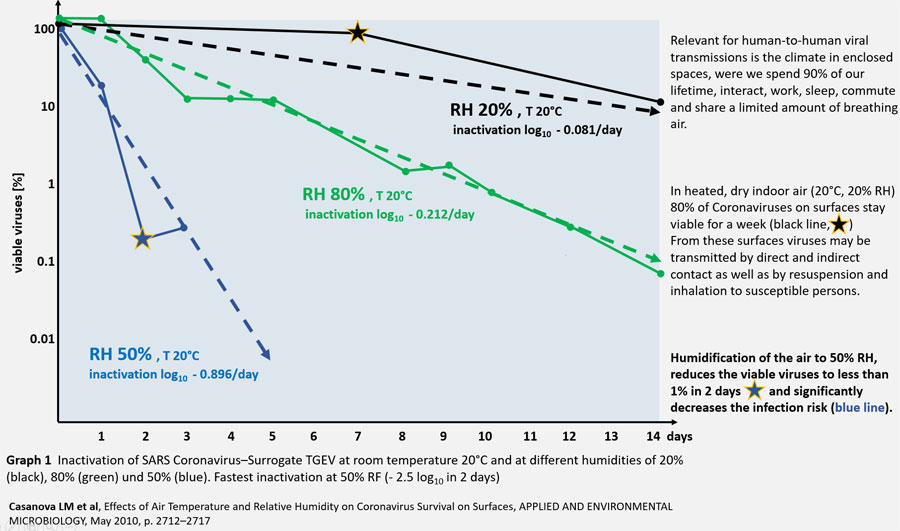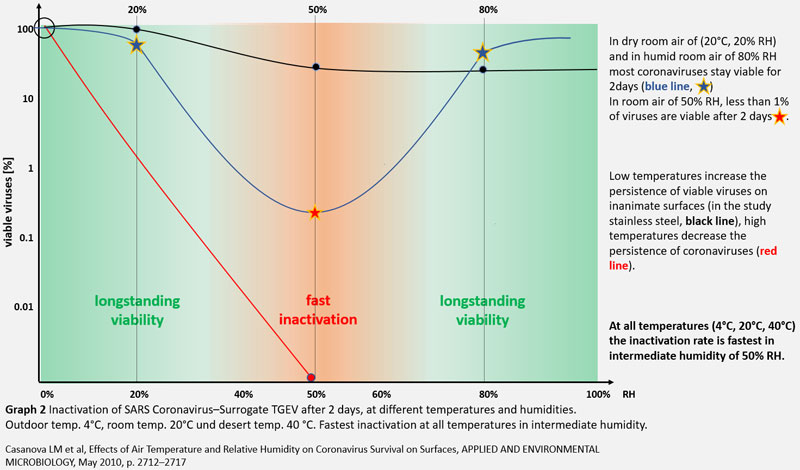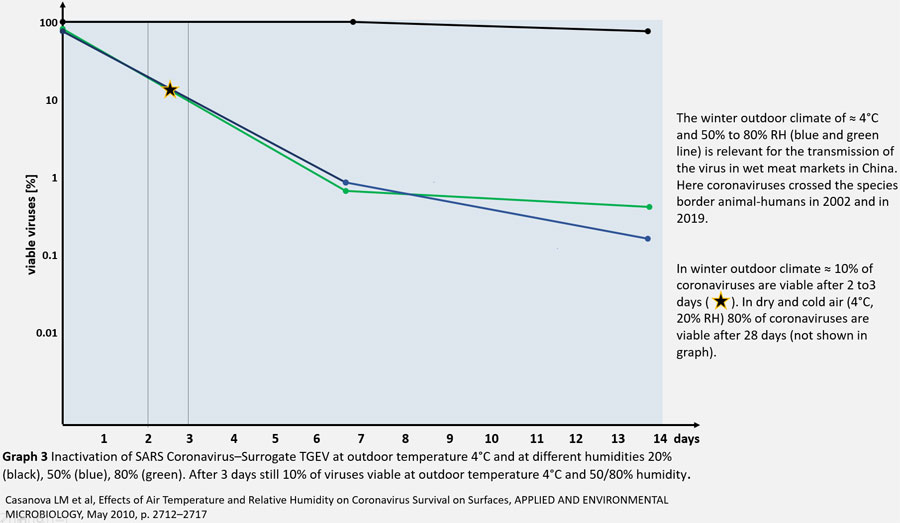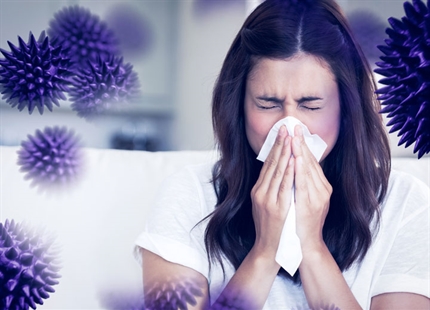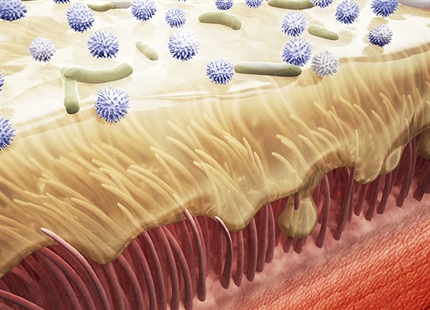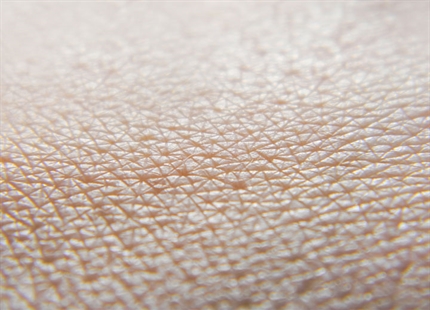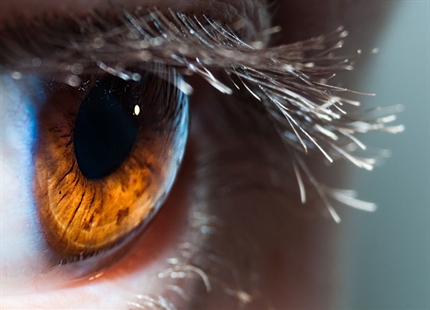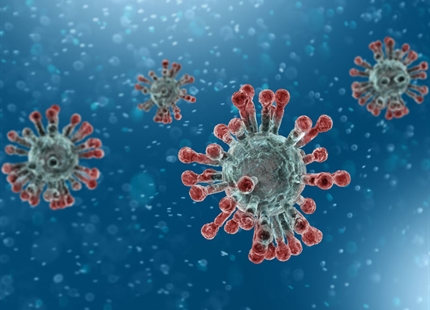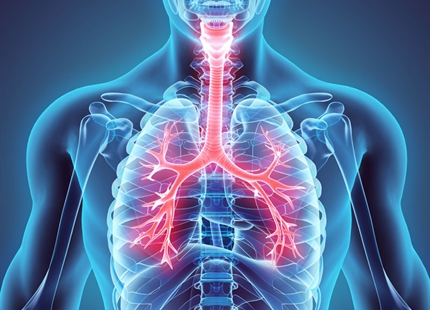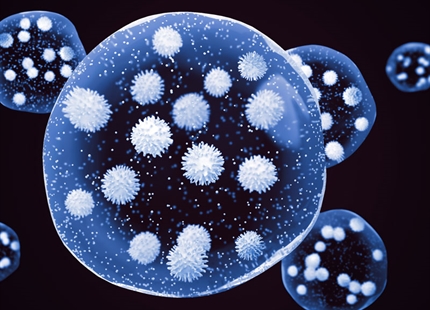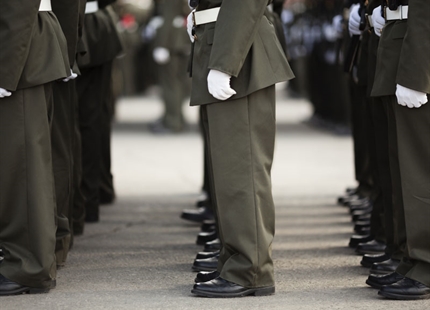Published: Mar 2010 | DOI: 10.1128/AEM.02291-09
Effects of Air Temperature and Relative Humidity on Coronavirus Survival on Surfaces
Lisa M. Casanova, Soyoung Jeon, William A. Rutala, David J. Weber, Mark D. Sobsey
Objective
This study set out to examine the effects of air temperature and humidity on two coronaviruses similar in nature to SARS-CoV. Studying SARS-CoV requires specially trained personnel and biosafety level 4 laboratory containment conditions. As there are significant challenges in studying this virus, the use of similar “surrogate” viruses allows a greater understanding of the survival and persistence of coronaviruses and potential insight into the risk of transmission and control measures for viruses, such as SARS-CoV.
The used animal coronaviruses were the transmissible gastroenteritis virus (TGEV) and mouse hepatitis virus (MHV).
Method
Thin stainless steel coupons, inoculated with a known number of viruses, suspended in a fluid, resembling human secretions, were used as test surfaces and sealed inside containers. Nine such temperature and humidity controlled environments were created at 4°C, 20°C and 40°C, across 20%RH, 50%RH and 80%RH.
The rate of virus inactivation at the different controlled conditions was measured by viral plaque assays (number of viruses inducing a cytopathic effect) at time t (Nt), compared to the initial virus concentration (N0) expressed as log10. Sampling took place at varying intervals for the different conditions.
Results
- The greatest level of virus inactivation took place at 50%RH.
- The lowest level of virus inactivation took place at 20%RH.
- Inactivation was more rapid at 20°C than at 4°C at all humidity levels.
- Both viruses were inactivated more rapidly at 40°C than at 20°C.
- The relationship between inactivation and RH was not monotonic, and there was greater survival or a greater protective effect at low RH (20%) and high RH (80%) than at moderate RH (50%).
- Infectious virus deposited on stainless steel surfaces persisted for at least 3 days at 50%RH (20°C) and for up to 28 days at 20%RH (-2 log10).
The study suggests that the animal coronaviruses studied (TGEV and MHV) could serve as conservative surrogates for modelling exposure, transmission risk, and control measures for human pathogenic viruses, such as SARS-CoV and other coronaviruses.

